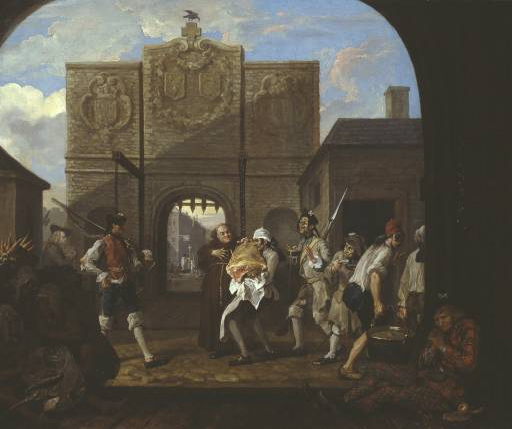Next Tuesday, 9 May, is Europe Day, designed to promote awareness of “the values of European Union”. It is also Schumann Day, marking the fiftieth anniversary of an influential speech given by the French Foreign Minister, Robert Schumann, now widely credited with laying the foundations for the formation of a united Europe. Hence this week’s cautionary choice of picture, William Hogarth’s Calais Gate, or O! The Roast Beef of Old England. Venomously xenophobic, profoundly insular, it is a lasting monument to the values and attitudes of a quintessential, unpersuadable English Euro-sceptic.
Hogarth’s viciously anti-French satire has its origins, paradoxically, in an outbreak of peace between Britain and its European neighbours. In 1748 the British, the French and the Dutch signed an armistice designed to put an end to the War of the Austrian Succession. The Peace of Aix-la-Chapelle meant that the continent was once more open to English travellers. so Hogarth, together with a group of other painters, sculptors and engravers set off on a jaunt to Paris. But the trip did not turn out well. Hogarth, according to one of his fellow-travellers, spent his entire time in a foul mood, picking fights and finding fault:
“While Hogarth was in France, wherever he went, he was sure to be dissatisfied with what he saw. If an elegant circumstance either in furniture, or the ornaments of a room, was pointed as deserving approbation, his narrow and constant reply was, ‘What then? But it is French!’ … In the streets he was often clamorously rude.” Unsurprisingly, after just a short time in Paris Hogarth decided to turn straight around and go back to Calais. It was there that the events on which he was to base his picture took place.
By Hogarth’s own account, he was “sauntering about” minding...

ITP 3: Calais Gate, or O! The Roast Beef of Old England, by William Hogarth
07-05-2000

